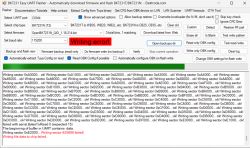
Hello my dear friends. I invite you to a short test of another 'smart' relay module for smart home, this time RR400ZB aka TS011F, based on Zigbee communication. I will test its operation with Home Assistant, present its interior and at the very end I will sketch its schematic.
Product purchase I found the product under Tuya ZigBee 3.0 Smart Life Breaker Relay Module Wireless Remote Control Alexa However, it is also worth searching for by model name: RR400ZB LoraTap. It cost $14 with free shipping, or $55.
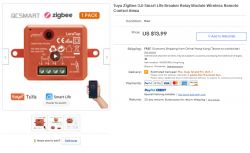
At the outset, I must emphasize here that this module is based on Zigbee communication, that is, it requires a special hub for cooperation. This is not a module with WiFi. But that will be explained a bit later.
Parameters according to the vendor:
Quote:
App Name: Tuya or Smart Life
Voice Control: Google Assistant and Amazon Alexa
Wireless Protocol: Tuya ZigBee 3.0(can just work with Tuya ZigBee Hub, it can't work with other brands' Hub)
Control Distance: 10 meters around the Tuya ZigBee Hub
Plastic Material: Fireproof ABS
Certification: CE, RED, EMC, RoHS
Produced by ISO9001:2015 factory: Yes
Patented Product: Yes
Dimensions: 47mm*42mm*23mm
Color: Orange
The contents of the kit are a bit richer than usual:
Quote:
1 * Tuya ZigBee 3.0 Socket Module
1 * Screw Driver
1 * Screw Kits
2 * Cable for Wiring
1 * Double-Sided Tape
1 * User Guide
Examples of use and installation:
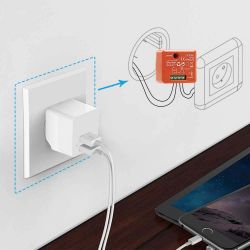


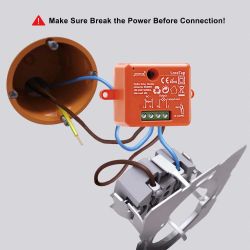
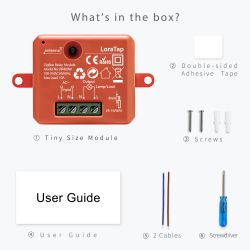
Set contents On the package is the full model name: RR400ZB. Although this name somewhat conflicts with the name from the case (RR400W), in my opinion, however, the former is correct. ZB stands for ZigBee versions, and W stands for WiFi versions. The product is available in two versions.
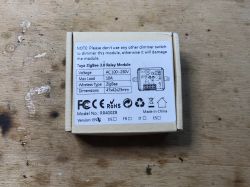
The kit turned out to be even richer than announced by the seller:
 However, I don't know why these threaded caps are included:
However, I don't know why these threaded caps are included: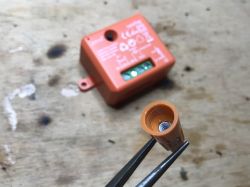
The relay itself is slightly smaller and lighter than I thought. The low weight suggests there is no transformer inside.
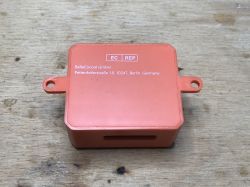
 Pairing instructions (the information that the device will not work with other gateways than the manufacturer's is not true; it will work with Home Assistant and Zigbee2mqtt):
Pairing instructions (the information that the device will not work with other gateways than the manufacturer's is not true; it will work with Home Assistant and Zigbee2mqtt):
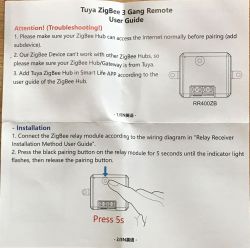

Installation instructions:


LoraTap flyer:

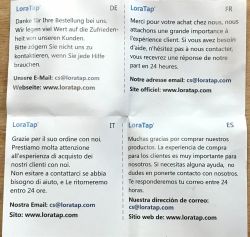
Pairing with Home Assistant I do not have the hub recommended by the vendor. It would be too limiting, and I want to be able to mix products from different manufacturers. For this reason, I used an open source solution supporting a wide range of modules as a hub, the famous Home Assistant.
Home Assistant along with Zigbee2MQTT I had prepared according to my tutorial:
https://www.elektroda.pl/rtvforum/topic3777098.html
Then I had to press the button on the device, for more than 5 seconds, until the LED from the center starts flashing.
Home Assistant immediately recognized the new device:

Device information:
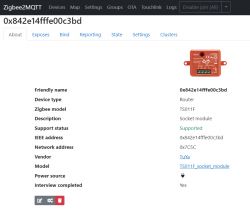
Home Assistant sees this product as TS011F (Socket Module).
It also appears in the Zigbee2mqtt list:

You can then control it both from Home Assistant and normally with a button:
 . Teardown RR400ZB/TS011F It's time to look inside. The case is quite hard to open, you need to lift it with two flathead screwdrivers:
. Teardown RR400ZB/TS011F It's time to look inside. The case is quite hard to open, you need to lift it with two flathead screwdrivers:
 Then the electronics board already falls out from inside.
Then the electronics board already falls out from inside. There is indeed no transformer. The power supply is transformerless, based on OB2222MCP.
There is indeed no transformer. The power supply is transformerless, based on OB2222MCP. 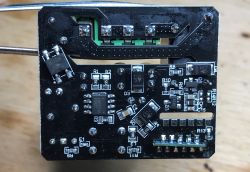
OB2222MCP and its example application (but on the board there is additionally a choke and a second electrolytic capacitor for 400V):
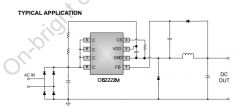 It is also worth noting the diodes. There are diodes with code M7 (1N4007) and one fast one (code ES1J). I wonder what role this fast one has? The schematic will explain itself:
It is also worth noting the diodes. There are diodes with code M7 (1N4007) and one fast one (code ES1J). I wonder what role this fast one has? The schematic will explain itself: 
 Top. The relay is the RJ-SS-105DM1 at 5V:
Top. The relay is the RJ-SS-105DM1 at 5V: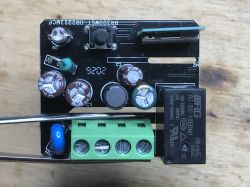
The ZS2S module is responsible for communication:
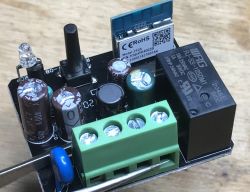
ZS2S is a Tuya production module based on EFR32MG21A020F768 (32-bit, Arm Cortex-M33 core, 80MHz, 768KB Flash, 64KB SRAM).
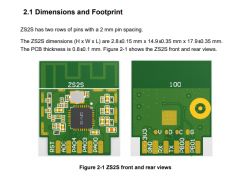
I don't see a fuse here, but there is a varistor to protect the input from surges, 07D471K:
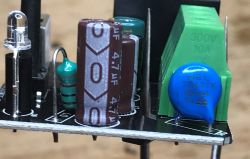
The choke from the input pi filter (this will be explained in the schematic):
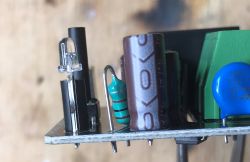
. Schematic RR400ZB/TS011F I drew the schematic on a board base. I tried to keep the naming of the elements the same as on the description layer. Oddly enough, here the numbering of the elements is from zero, so we have C0, L0, etc.
Some elements (such as the 0 ohm resistor in the role of a jumper) I omitted.
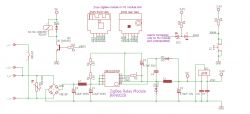
The element with the code GK9t I did not recognize, but it is known that it is an LDO regulator 3.3V.
I also noticed that the LED inside is doubled, but one of its pins is not connected anywhere (actually, it's only plugged into the M2 slot for another module, probably for a WiFi module..).
The equivalent on WiFi The product described here communicates via Zigbee, but there is also an equivalent with WiFi. RR400W. Sometimes it contains a Realtek module inside, and sometimes ESP8266. In the case of the version with ESP, it is supported by Tasmota:

. Summary First impression was quite good. The kit rich, even the wires they gave .... Module small, lightweight, lighter than I would have expected. Lots of mounting options (pins, or for adhesive tape, the brackets on the sides can be broken if necessary). Aesthetically pleasing case (although it's a matter of taste). Still this screwdriver small (as if they suggested that this module should be mounted by someone non-technical, which I strongly disagree with!)
Unfortunately, in the interior the manufacturer did not show off, the circuit is without a fuse. Interestingly, quite recently I have already described another smart relay powered by OB2222 and there the fuse was. As you can see, even between the modules realized on the basis of this OB2222 there are minor differences which can be seen only when you look inside.
In use with Home Assistant, however, the module is trouble-free, even though the manufacturer claims that the module will not work with other gateways than his. With Zigbee, you don't even need to change the batch, and when paired with your own gateway, there's no worry that the chip is tracking you and sending some data to the manufacturer's servers.
I'm attaching the documentation for the ZS2S module. .
Cool? Ranking DIY Helpful post? Buy me a coffee.




